 Misconceptions
Misconceptions  Misconceptions
Misconceptions  History
History 10 Amazing Roman Epitaphs
 Weird Stuff
Weird Stuff 10 Niche Subcultures That Are More Popular Than You Might Think
 Mysteries
Mysteries 10 Tragic Disappearances and Deaths in Joshua Tree National Park
 History
History 10 Ways Childhood Really Sucked in the Old West
 Music
Music 10 Name Origins of Famous Bands from the 1990s
 Religion
Religion 10 Biggest Turnarounds by the Catholic Church
 Weird Stuff
Weird Stuff 10 Unbelievable Times Laws Had Unintended Consequences
 Humans
Humans Ten Historic Women Who Deserve Way More Credit Than They Got
 Movies and TV
Movies and TV 10 Films That Spawned Major Lawsuits
 Misconceptions
Misconceptions 10 Phony Myths and Urban Legends That Just Won’t Die
 History
History 10 Amazing Roman Epitaphs
 Weird Stuff
Weird Stuff 10 Niche Subcultures That Are More Popular Than You Might Think
Who's Behind Listverse?

Jamie Frater
Head Editor
Jamie founded Listverse due to an insatiable desire to share fascinating, obscure, and bizarre facts. He has been a guest speaker on numerous national radio and television stations and is a five time published author.
More About Us Mysteries
Mysteries 10 Tragic Disappearances and Deaths in Joshua Tree National Park
 History
History 10 Ways Childhood Really Sucked in the Old West
 Music
Music 10 Name Origins of Famous Bands from the 1990s
 Religion
Religion 10 Biggest Turnarounds by the Catholic Church
 Weird Stuff
Weird Stuff 10 Unbelievable Times Laws Had Unintended Consequences
 Humans
Humans Ten Historic Women Who Deserve Way More Credit Than They Got
 Movies and TV
Movies and TV 10 Films That Spawned Major Lawsuits
Top 10 US States That Did Not Make The Cut
From the moment the first 13 colonies formed the United States of America, there have been several attempts to create new states that just did not make the cut. These regions were within the borders of today’s Lower 48, but the people in these areas were unhappy with the governments of their respective states and territories. So in true revolutionary style, they decided to break away.
They didn’t necessarily pull out guns and go down in physical fights, but they did make formal attempts to create new states in the US. The reasons for these proposed new states provide a fascinating read. If you’re a US citizen, you might be living in a different state today if any of the following 10 US states had made the cut.
10 Free City Of Tri-Insula
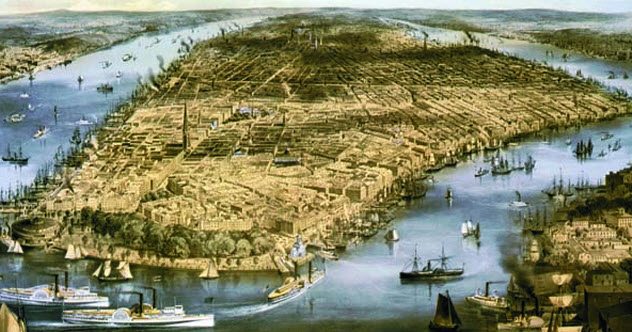
In January 1861, New York Mayor Fernando Wood announced that New York City would secede from the antislavery North and join the proslavery South if the Union ever broke up. Wood, a staunch critic of Abraham Lincoln, claimed that the move was necessary as the Lincoln-led Union was a corrupt entity that was only interested in New York’s wealth. Under the new arrangement, Long Island would merge with Manhattan and Staten Island to create the Free City of Tri-Insula.
In truth, New York’s elite, which included Wood, were only trying to protect their wealth. At that time, New York was the most profitable city in the Union. However, its riches were tied to the South and the slave trade.[1]
Its primary cash cow was the supply of goods and services, including slaves, to the proslavery South. New York also financed slave expeditions and served as a rendezvous point for slaves about to be shipped to Brazil and Cuba. New York abandoned its secession plan after the Confederates attacked Fort Sumter in April 1861.
9 State Of Sequoyah
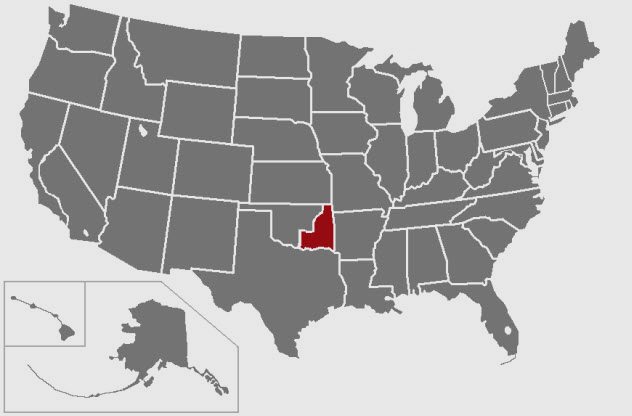
The Territory of Oklahoma was renamed the State of Oklahoma when it became the 46th state of the Union in November 1907. Before then, the territory attempted to join the Union as two states: the State of Oklahoma and the State of Sequoyah, which today forms part of eastern Oklahoma. Had the State of Sequoyah been created, it would have been dominated by members of five Native American tribes that were resettled there from Mississippi in 1830.
The first call for the state was raised in 1902 when natives of the Five Civilized Tribes (Cherokee, Chickasaw, Choctaw, Creek, and Seminole) met and proposed the creation of a Native American–dominated state. The state was named after Sequoyah, the Cherokee leader who created the Cherokee alphabet. The tribes met again in 1903 and 1905, when they drafted a constitution and petitioned the US Congress to accept the proposed state into the Union.[2]
The state was almost created. Then politicians from the eastern United States advised President Theodore Roosevelt against admitting two western states into the Union over fears that the West would become more influential than the East. This ended the attempt to carve out the State of Sequoyah from the Territory of Oklahoma. Interestingly, the constitution adopted by the State of Oklahoma is an edited version of the one from the proposed State of Sequoyah.
8 State Of Franklin
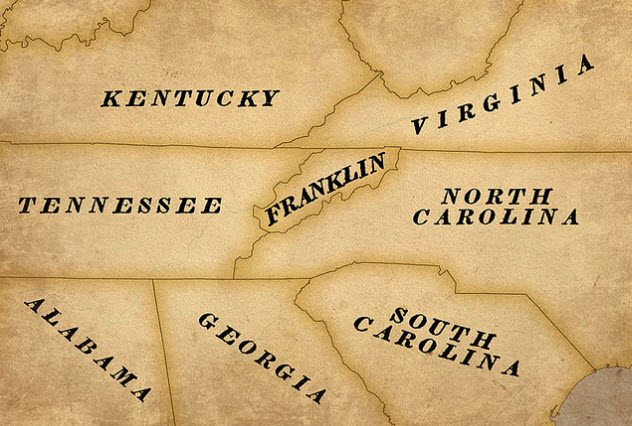
After the Revolutionary War, North Carolina remained undecided about what to do with today’s East Tennessee, which used to be part of its territory. At first, East Tennessee was almost ceded to the federal government. However, North Carolina reversed this decision and decided to hold onto the land until they determined what to do.
This created tension in East Tennessee, whose citizens feared that North Carolina would not protect them if they were ever attacked by Native Americans. So, on August 23, 1784, the citizens of East Tennessee seceded from North Carolina and formed the territory of Frankland, which applied to become the 14th state of the Union in 1785.[3]
North Carolina opposed the proposal. But the unrecognized state, led by John Sevier, continued with its secession attempt and tried winning the support and recognition of other states. Its government even renamed the territory Franklin, hoping to win the support of Benjamin Franklin, one of the Founding Fathers of the United States.
Benjamin Franklin never supported the new territory, but it did win the support of seven other states. Unfortunately, this was not enough to meet the two-thirds majority needed for its inclusion in the Union.
Nevertheless, Sevier continued to govern the “state of Franklin.” They drafted a constitution, set up courts, and signed treaties with neighboring native tribes. Even so, the state faced the threat of a Native American invasion in 1788. With no local allies, Sevier asked Spain for help.
This did not go down well with the North Carolina government, which promptly arrested Sevier. His supporters forcefully freed him from jail. Thereafter, Sevier relinquished control of Franklin to North Carolina, which fought off the Native Americans.
7 States Of Jacinto, Lincoln, Matagorda, Texlahoma, Jefferson, And More
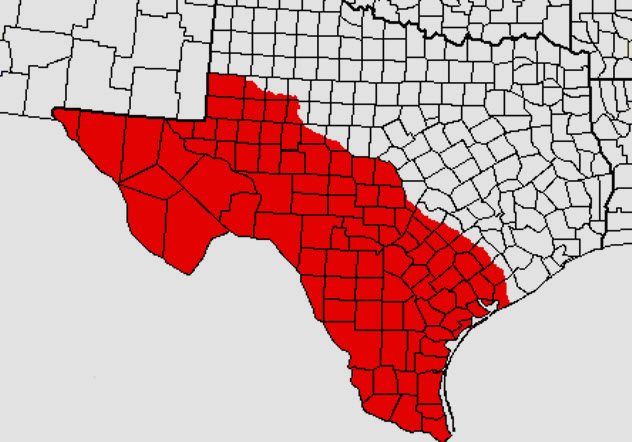
In March 1845, the US Congress called for the division of Texas into a maximum of four states. Since then, there have been a series of attempts to divide Texas into several states. So far, all have failed.
The first attempt was in 1847 when it was suggested that Texas be separated into proslavery East Texas and antislavery West Texas. This proposal came to an abrupt end after the death of Isaac Van Zandt, one of its major proponents.
In 1850, a plan to carve out the State of Jacinto from Texas won little support in Congress. Then another proposal in 1852 to divide Texas into East Texas and West Texas was stalled after 33 men in the Texas legislature vetoed it. Only 15 legislators supported it.[4]
A constitutional convention held from 1868 to 1869 suggested the division of Texas into East Texas, South Texas, and Texas. The plan was rejected along with another to carve the State of Lincoln out of southern and western Texas.
Later, in 1870, the proposal to create the territories of Jefferson and Matagorda from Texas never came to fruition. Had it occurred, the territories would have been elevated to states whenever they decided to join the Union.
In 1871, it was suggested that Texas be divided into North Texas, South Texas, East Texas, and West Texas. Another proposal was made in 1914 to carve the State of Jefferson out of Texas. Before World War II, there was also a plan to merge 46 counties from Texas with 23 from Oklahoma to create the State of Texlahoma. All these ideas were rejected.
Several other proposals occurred throughout the 20th century, including a plan in 1991 to carve out the State of Old Texas from Texas. Like the others, it met a brick wall.
6 State Of Absaroka
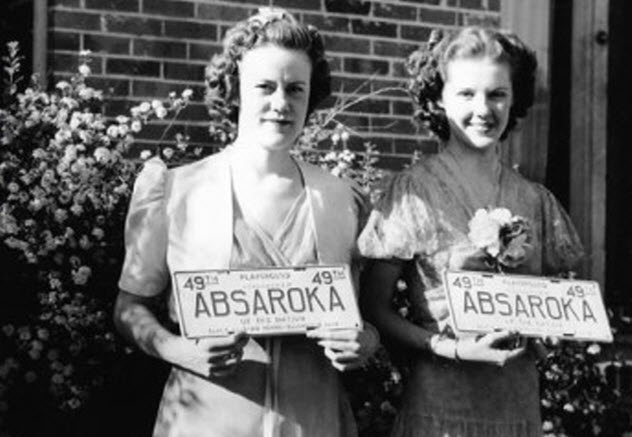
In 1939, disgruntled farmers from border counties in South Dakota, Wyoming, and Montana came together to form the State of Absaroka. Why? They were unhappy with the federal government for not bailing them out of the Great Depression. The name of the state was derived from the Crow word for “children of the large-beaked bird” and is pronounced “ab-SOHR-ka.”
The citizens drew their map, printed license plates, and elected a governor. They also held a Miss Absaroka contest, which happened to be the only one ever held. The secession attempt was an embarrassment for the governments of Wyoming and Montana, which quickly began paying attention to the problems of the farmers.
The plans for the creation of the state were finally abandoned after the outbreak of World War II.[5]
5 State Of Jefferson
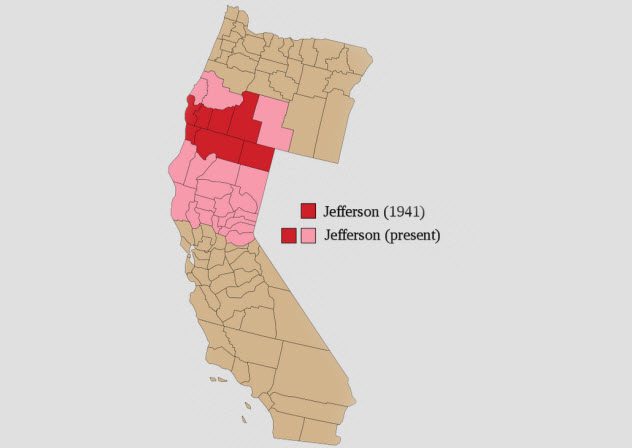
In October 1941, Gilbert Gable, the mayor of Port Orford, Oregon, proposed the creation of a new state by merging his county with two others from Oregon and three from California. He never provided a name for the proposed state, so a naming competition was held to decide what to call it.
Bonanza, Discontent, Jefferson, Orofino, Siscurdelmo, and Del Curiskiyou made the short list, but citizens settled on Jefferson in honor of Thomas Jefferson, the third president of the United States.
It is suggested that Gable was never serious about the plan and was only interested in drawing attention to the poor road at the Oregon-California border. Nevertheless, the proposal gained nationwide attention when young men armed with hunting rifles stopped traffic on a highway and distributed pamphlets announcing the new state.[6]
The secession attempt suffered a setback after Mayor Gable died on December 2 and finally came to an end after Japan bombed Pearl Harbor five days later.
4 Trans-Oconee Republic
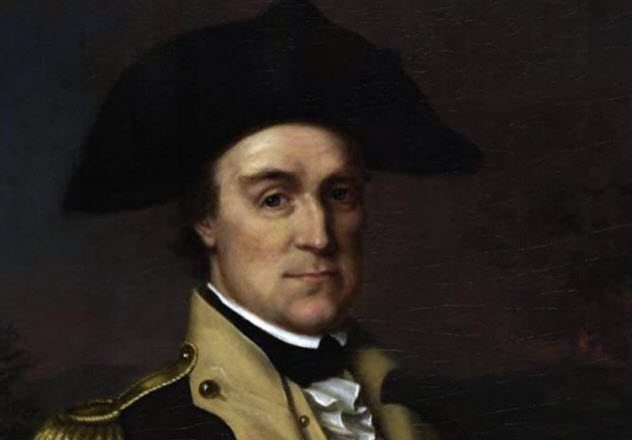
In May 1794, Elijah Clarke, a former member of the Georgia militia, trespassed into the western part of Georgia that was reserved for the Creek tribe and established the Trans-Oconee Republic. The Creek control over the region was backed by the 1790 Treaty of New York, which also empowered them to deal with trespassers.
However, Clarke insisted that certain trespassers should be allowed to settle in the area—specifically those whom the Creeks could not or would not expel. So he invaded the region with some men from a militia he had formed earlier to attack Spanish Florida on behalf of France.
The Creeks did not resist Clarke’s militia, which quickly shared the land, created fortifications, drafted a constitution, and held elections. President George Washington was not pleased with Clarke’s action and pressured Georgia Governor George Mathews to force Clarke out. This put Mathews in a fix because many Georgians disliked the Creeks and did not support the return of the land to them.
Mathews became emboldened at the urging of Judge George Walton, a famous lawyer who had signed the Declaration of Independence on behalf of Georgia. Walton clarified that Clarke’s action would encourage repeats and destroy several treaties signed by the government with the native tribes.[7]
In September 1794, Mathews sent a 1,200-man militia to forcefully expel Clark and his men from western Georgia. Luckily for Clarke, General Jared Irwin, one of the two generals leading the contingent, offered him the option of surrender. Clarke accepted the offer and vacated the region with his militia.
3 Territory Of Colorado
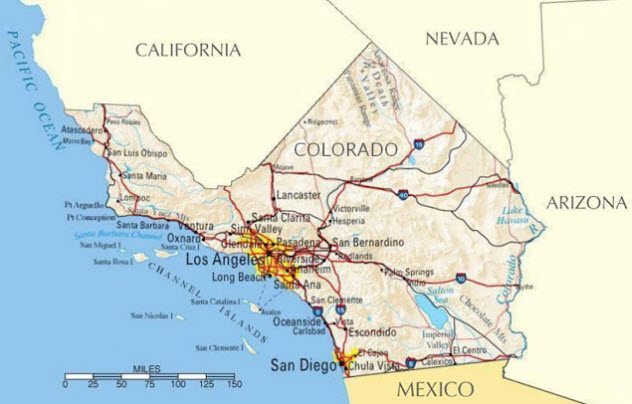
Not to be confused with today’s Colorado, the territory of Colorado was an attempt to carve out a state from California. It was proposed in 1859 by several Southern California legislators in protest of the unfair taxation of ranchers and farmers in that area. The number of ranchers and farmers equaled about 5 percent of the population of the mining regions, yet they paid twice as much in taxes as the miners did.
The secession movement was led by Andres Pico, a member of the California assembly.[8] He submitted a proposal to Congress calling for the creation of the state. However, the issue of slavery was a hotter topic and Congress turned down the proposal.
2 Free And Independent State Of Scott
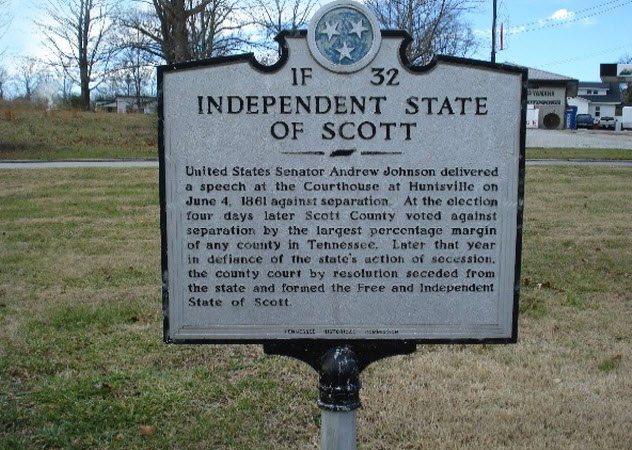
Tennessee joined the proslavery Confederacy during the US Civil War. However, the citizens of Scott, a remote county in Tennessee, did not support slavery so they pledged alliance to the antislavery Union. In June 1861, two months into the Civil War, citizens of the county agreed to secede from Tennessee to form the Free and Independent State of Scott.
The state was neither recognized by the Union nor the Confederacy. It was largely forgotten until 1986 (125 years later) when someone noticed that the county had never officially applied to be readmitted to Tennessee. That changed when citizens wrote to the governor and the Tennessee general assembly requesting to be readmitted as the 95th county of the State of Tennessee.[9]
1 The Province And Government Of Westsylvania
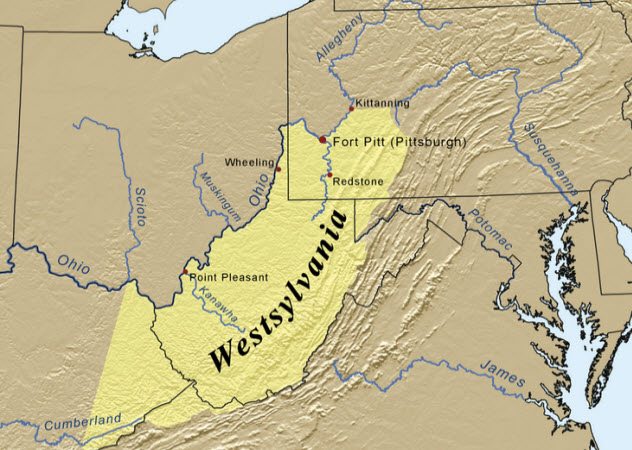
In the 1770s, the states of Pennsylvania and Virginia laid claims and established control over areas that form parts of today’s Virginia, West Virginia, Pennsylvania, Kentucky, and Maryland. These claims would have been sorted by the Mason-Dixon Line that demarcated Pennsylvania from Maryland, but the survey was abandoned in 1767.
(Technically, Pennsylvania, Virginia, and Kentucky are called “commonwealths” rather than “states.” So is Massachusetts, although it’s not involved in this territorial dispute. However, there’s really no difference between a state and a commonwealth in the US.)
In 1776, inspired by the ongoing Revolutionary War and fearing a civil war between both states, citizens of the disputed region declared independence and renamed the region “The Province And Government of Westsylvania.” Thereafter, they petitioned Congress to admit them as the 14th state of the Union. Congress ignored the petition, and the two states settled their border dispute in 1780.[10]
This renewed calls for the creation of Westsylvania as several Virginians were angry at becoming citizens of Pennsylvania. Calls for the state were stalled after the Pennsylvania Assembly denounced it as treason, which was punishable by death. The secessionists were finally quieted when Pennsylvania threatened to sell their lands.
Read more surprising facts about the United States on 10 Fascinating Maps That Will Change How You See The United States and 10 Failed Attempts To Create New US States.








